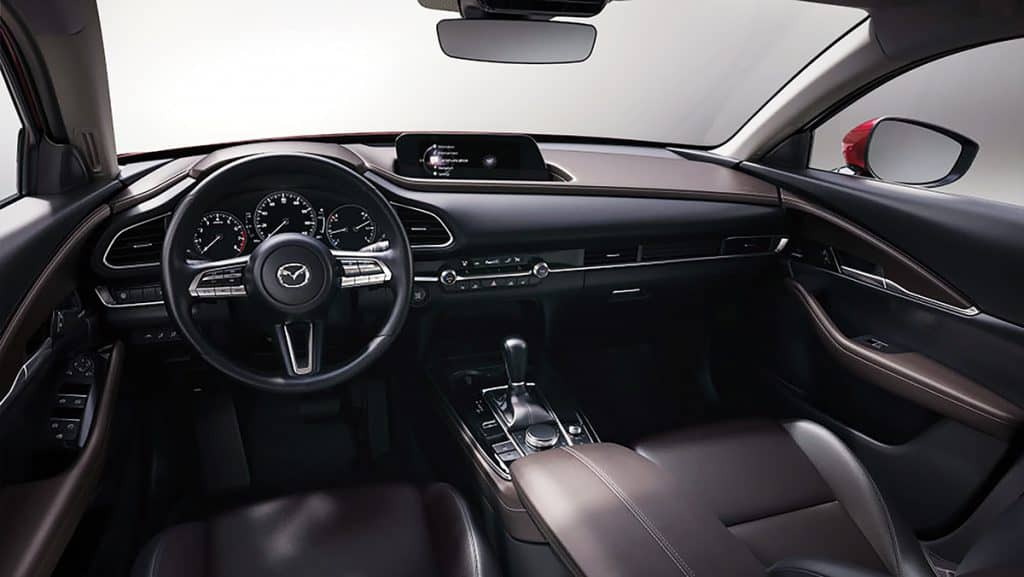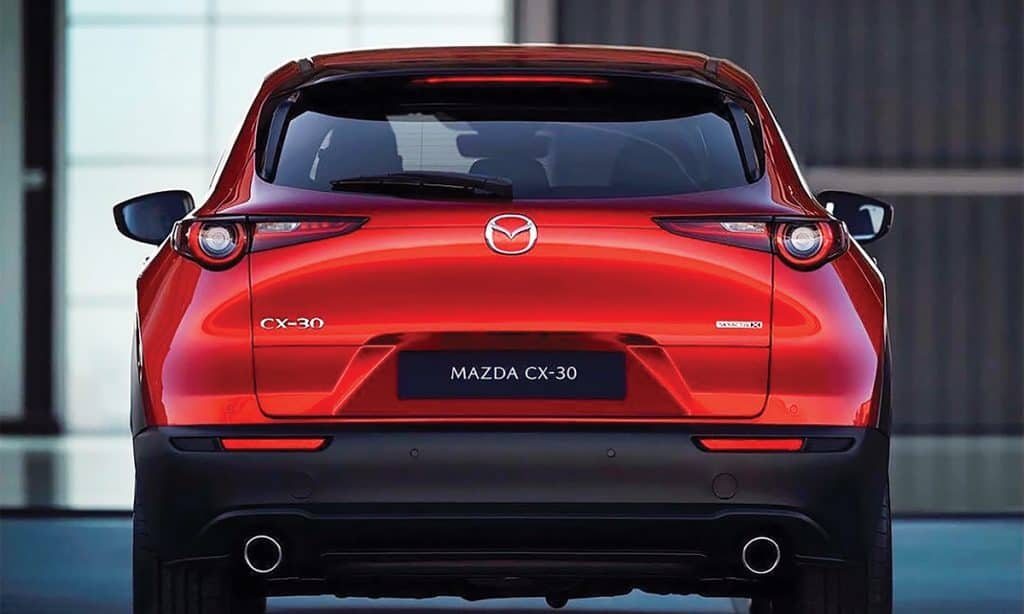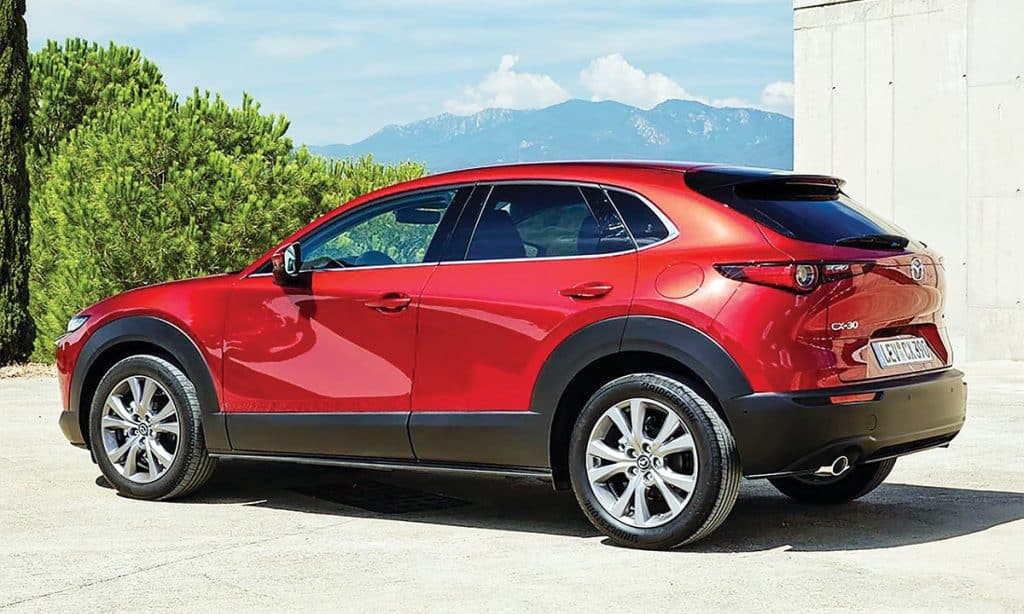Anyone who complains that the Mazda CX-30 (whose price ranges from just under P1.5 million to just under P2.0 million) is too expensive is missing the point. Yes, the CX-30 is a small crossover and Mazda isn’t a luxury nameplate, but the Hiroshima-based carmaker is fast cementing a reputation for consistently offering premium design and materials as well as cutting-edge technology. And that’s over and above the brand’s time-honored legacy of producing brilliantly dynamic cars since the pioneering rotary-powered Mazda Cosmo of 1967.
The CX-30 is a step up from the entry-level CX-3 in Mazda’s crossover lineup, even though they both have 2.0-liter Skyactiv-G engines and have just a five-inch difference in overall length and an inch in width; because while the CX-3 is based on the Mazda2, the CX-30 shares its platform with the one-class-bigger Mazda3 and has a minimum P170,000 premium over the CX-3 (with similar Pro 2WD trim). The all-important wheelbase measurement, however, pegs the CX-30 closer to the one-class-bigger CX-5 (less than two inches shorter) than the CX-3 (more than three inches longer).
Truth be told, it is hard to find a direct competitor for the CX-30 that falls under its size and price ranges. Similar-sized models are priced lower while similar priced models are sized bigger; hence the on-the-surface impression of its high price.
So what is the market of a Mazda CX-30? In one sentence, it would be someone who highly values head-turning style, premium materials, and a certain joie de vivre in an automobile—pretty much the priceless attributes that are the embodiment of luxury.

Sporting Mazda’s Evolved KODO design, the CX-30 is bold and eye-catching, masterfully combining the sleek and taut lines of a coupe with the proportions of an SUV. It starts with the now-familiar-but-still-compelling front end with its beady headlamps and distinctive black mesh grille with chrome surround. The side view emphasizes the car’s long, sloping hood, whose lines flow gracefully to the rear. The rear end is nicely rounded with a sharply slanted backlight, 3D LED taillamps and a deeply sculpted tailgate. Don’t expect a cavernous cargo area with that lower-than-usual roofline and sharply raked backlight, though. Of course, you can greatly expand the 430-liter cargo space with the rear seatbacks folded.
The base FWD Pro variant rides on 16-inch wheels (215/65R16 tires), but the mid- (FWD Sport) and flagship (AWD Sport) models roll on 18-inch wheels with 215/55R18 tires. LED lighting, rain-sensing wipers, and power folding mirrors are standard, but only the mid- and top-end models boast adaptive front lighting and only the AWD Sport gets a power tailgate.

The CX-30 shares the Mazda3’s 2.0-liter Skyactiv-G powerplant making 155hp at 6,000 rpm and 200Nm of torque at 4,000 rpm. A six-speed automatic with sport mode and paddle shifters is standard across the board, but only the range-topping model gets all-wheel drive.
The gorgeous eye candy of the exterior makes way to Japanese minimalism and functionality with a classy, understated (and easy to clean) two-tone black-and-dark brown interior. Drivers get to enjoy a driver-centric cockpit that allows a lot of tactile feel for switches and buttons. Passengers, meanwhile, enjoy a clean, airy space with decent overall room. Despite being just an inch wider than the CX-3, the CX-30 offers a wider space between the front seats, which allows a wider center console and center armrest. The rear seats also offer better head- and legroom. Leather seats are standard in the mid and top models while a power driver’s seat comes only in the AWD model.
All variants get a seven-inch LCD instrument panel as well as the latest generation Mazda Connect infotainment with an 8.8-inch widescreen display. Both FWD models come with an eight-speaker Mazda Harmonic Acoustics audio system. Mid-range and higher CX-30 models feature cruise control, dual-zone climate control with rear vents and an auto-dimming rearview mirror. The AWD flagship, meanwhile, boasts adaptive cruise control, a head-up display, and a stunning 12-speaker Bose audio system.

On the safety front, all models get seven airbags, ABS with EBD, stability control, and a rear parking camera. The AWD Sport adds front and rear parking sensors, a 360-degree camera, and Mazda’s i-Activsense suite of smart driver assist systems that combine smart brake support, front and rear cross-traffic alert, driver-attention alert, and blind-spot monitoring.
Yes, the Mazda CX-30 is pricey for a non-luxury brand. But it is one premium automobile—one that combines the sensuous styling of a Jaguar or Maserati SUV, the safety features of a Volvo, the craftsmanship of a Lexus, and the driving enjoyment of a BMW (not to mention the equally priceless reliability and ease of maintenance of a Japanese car).
All those things considered, the Mazda CX-30 is one heck of a bargain.

